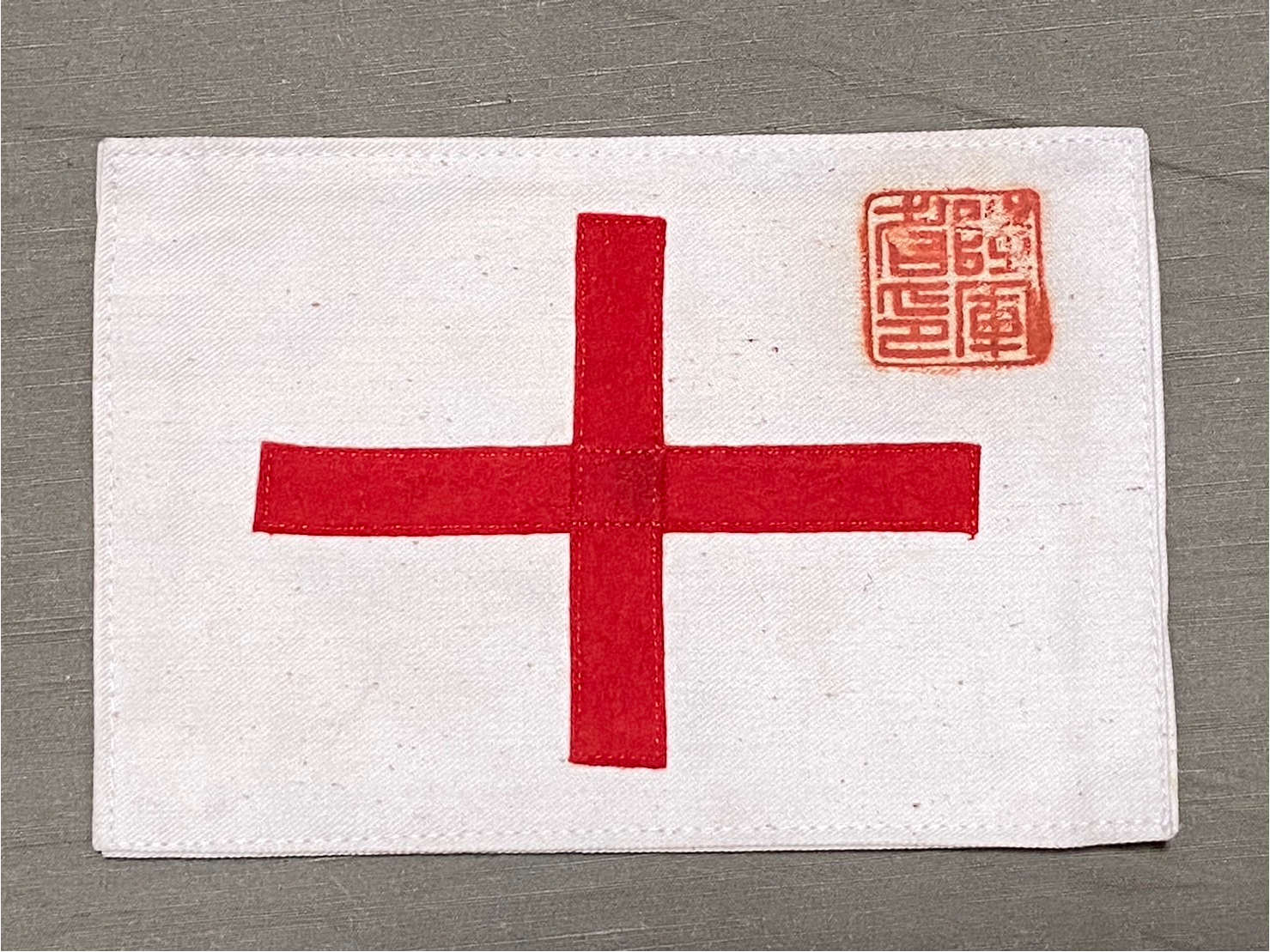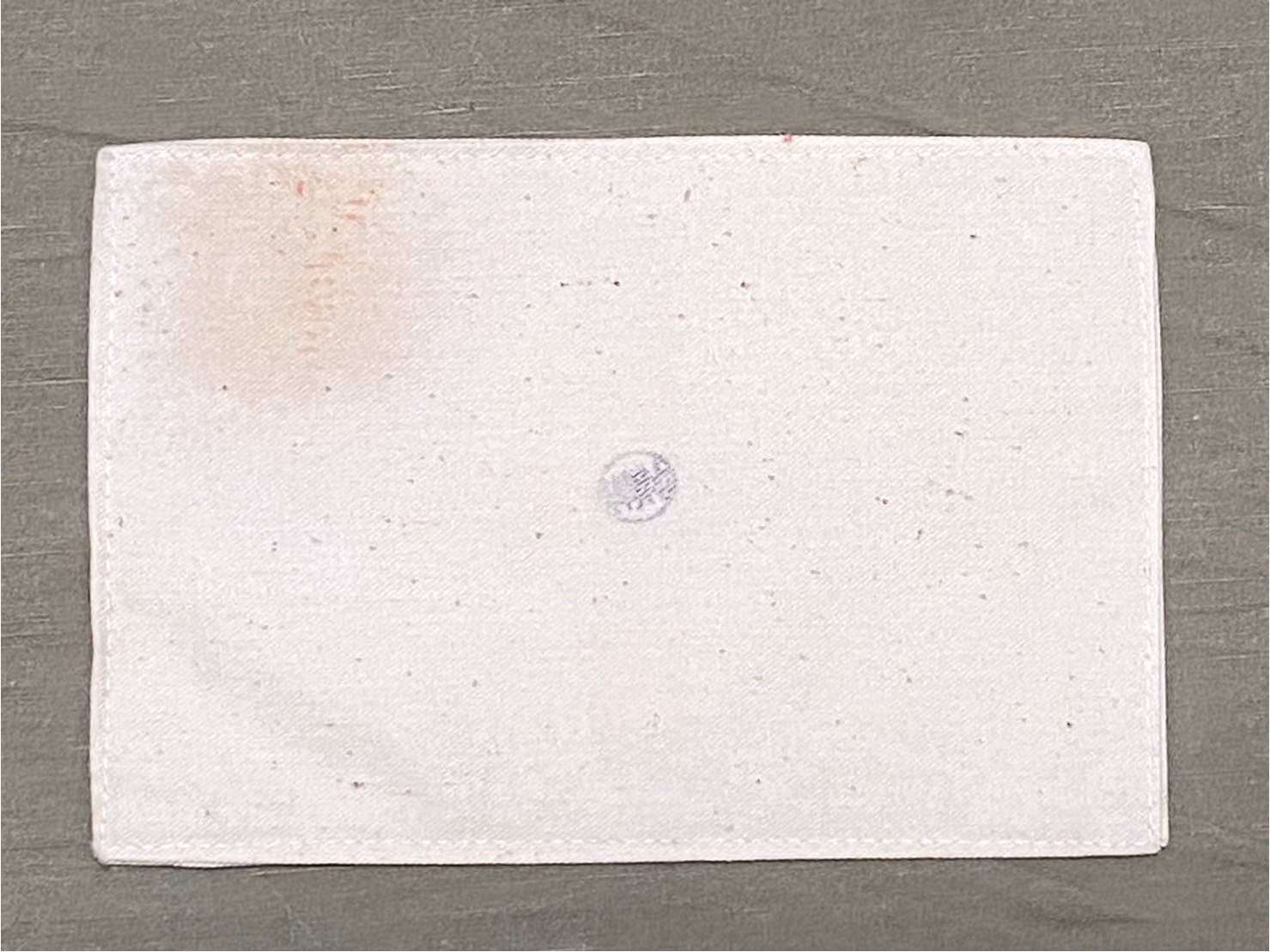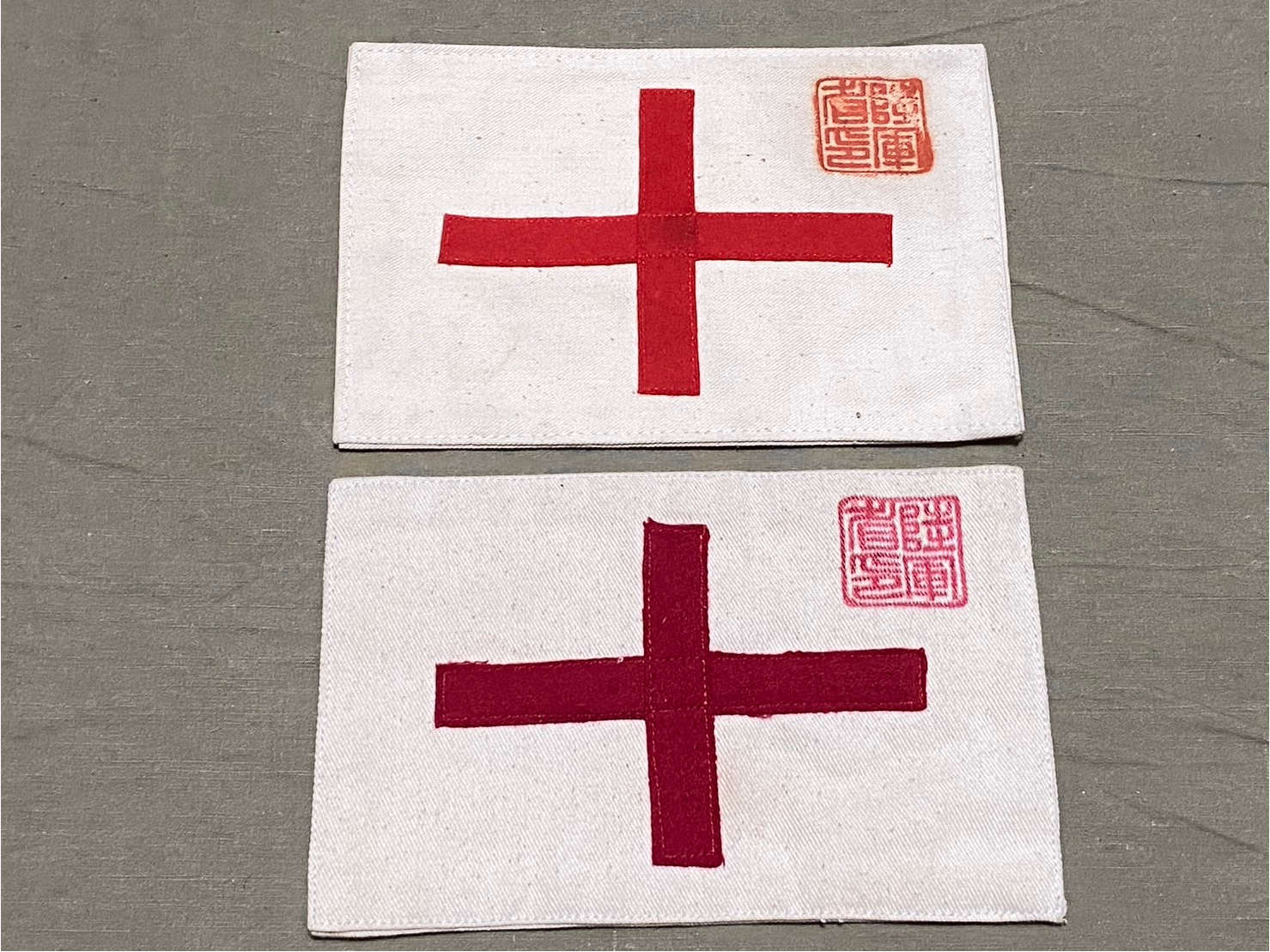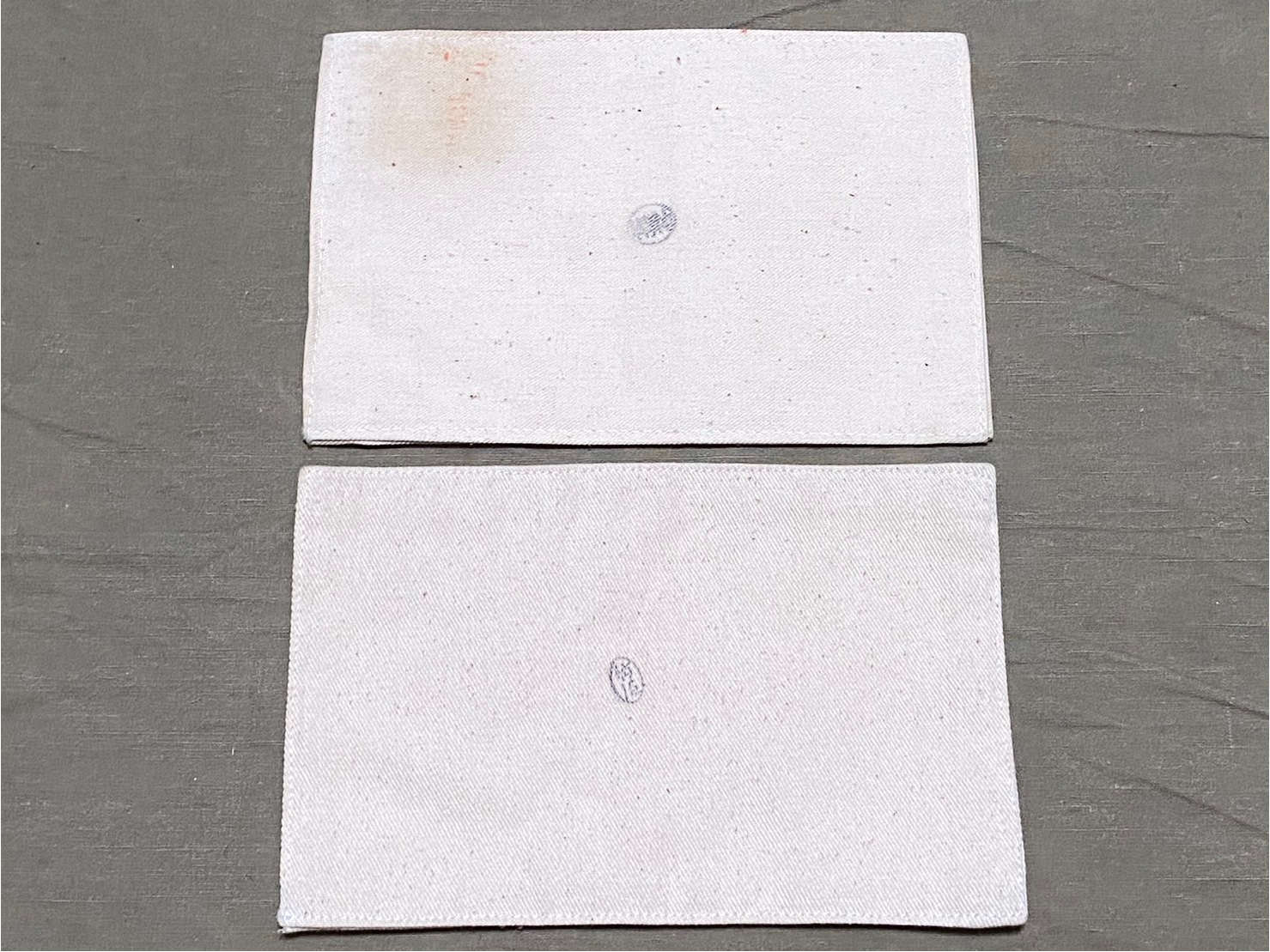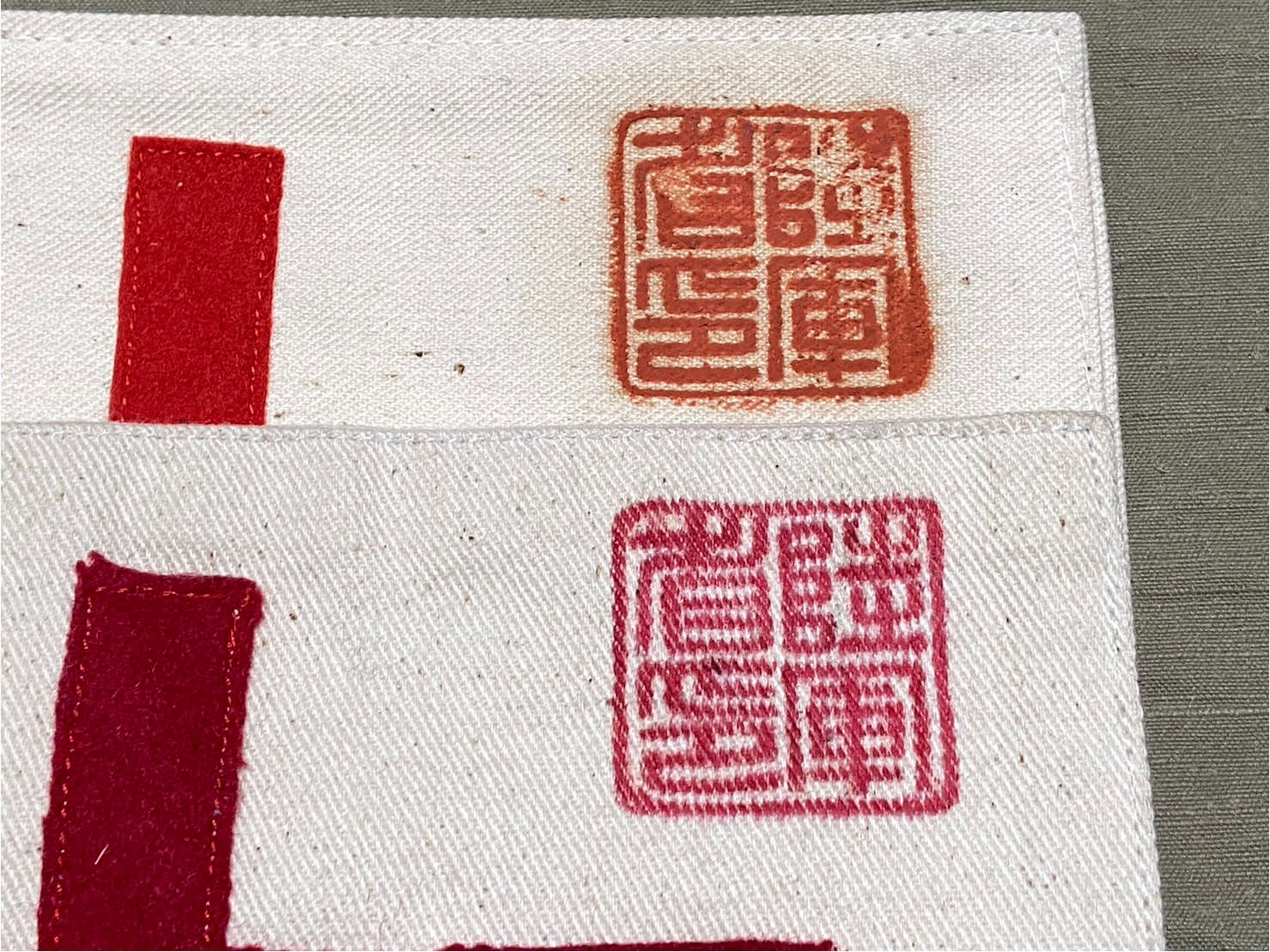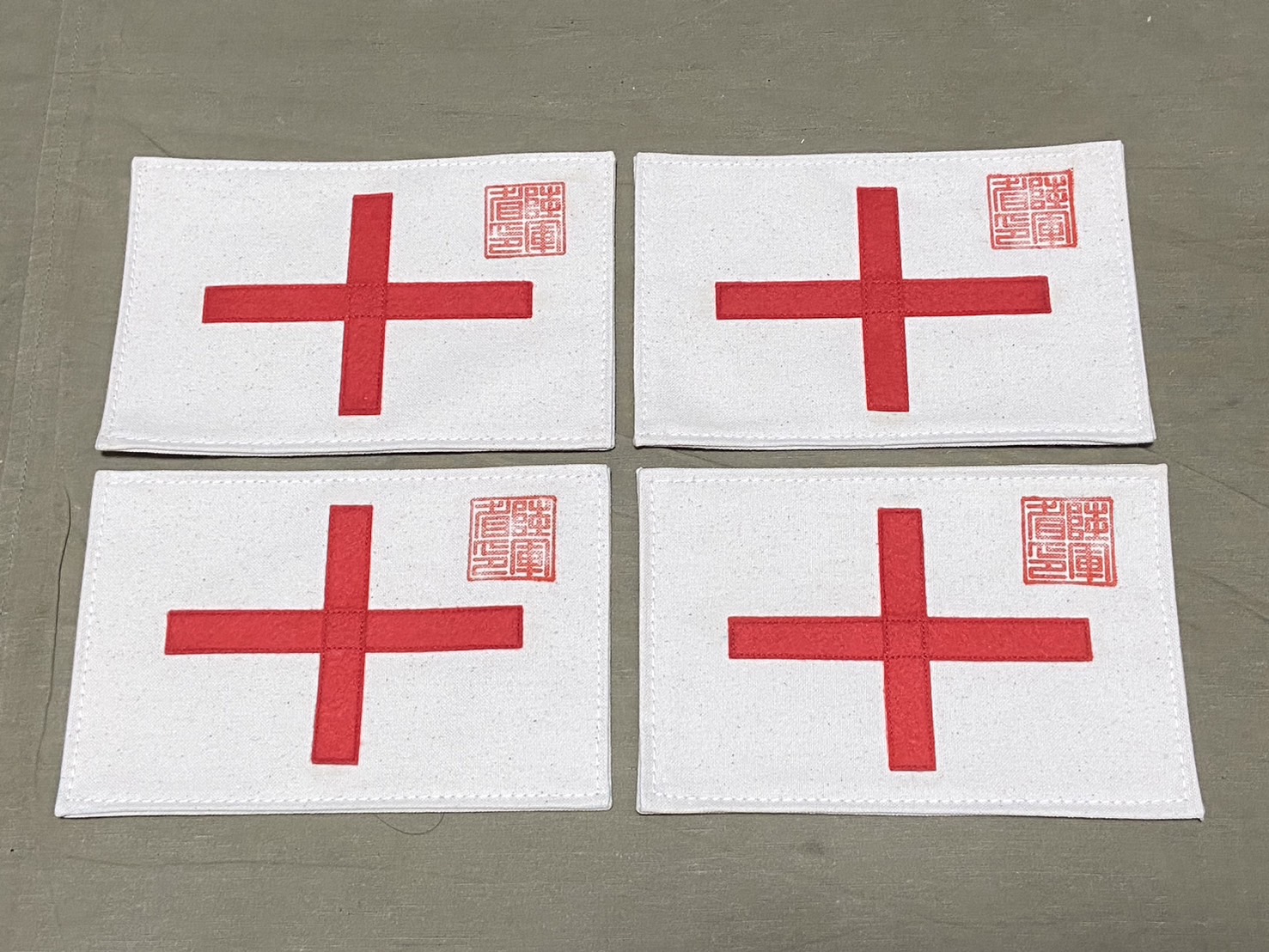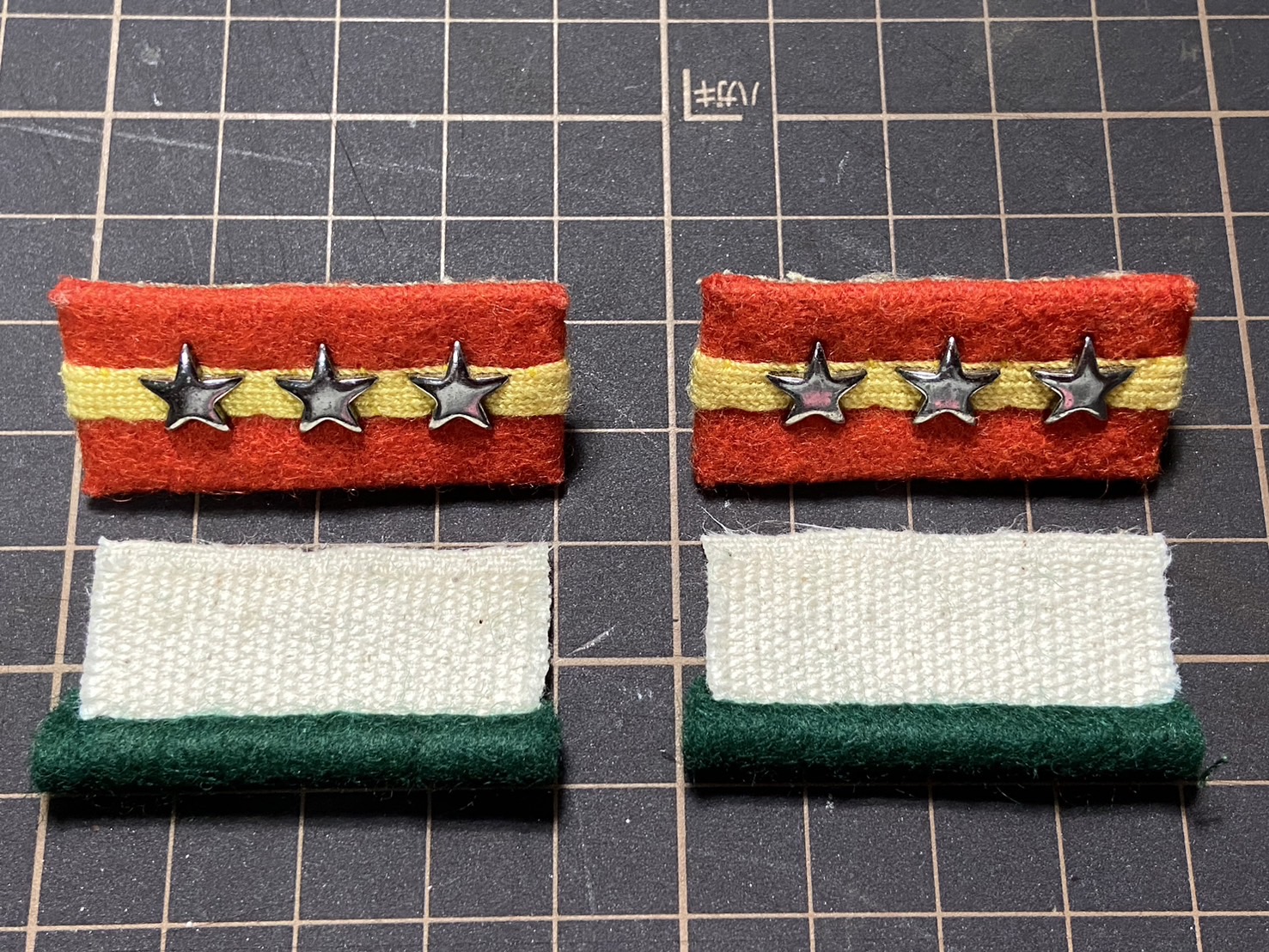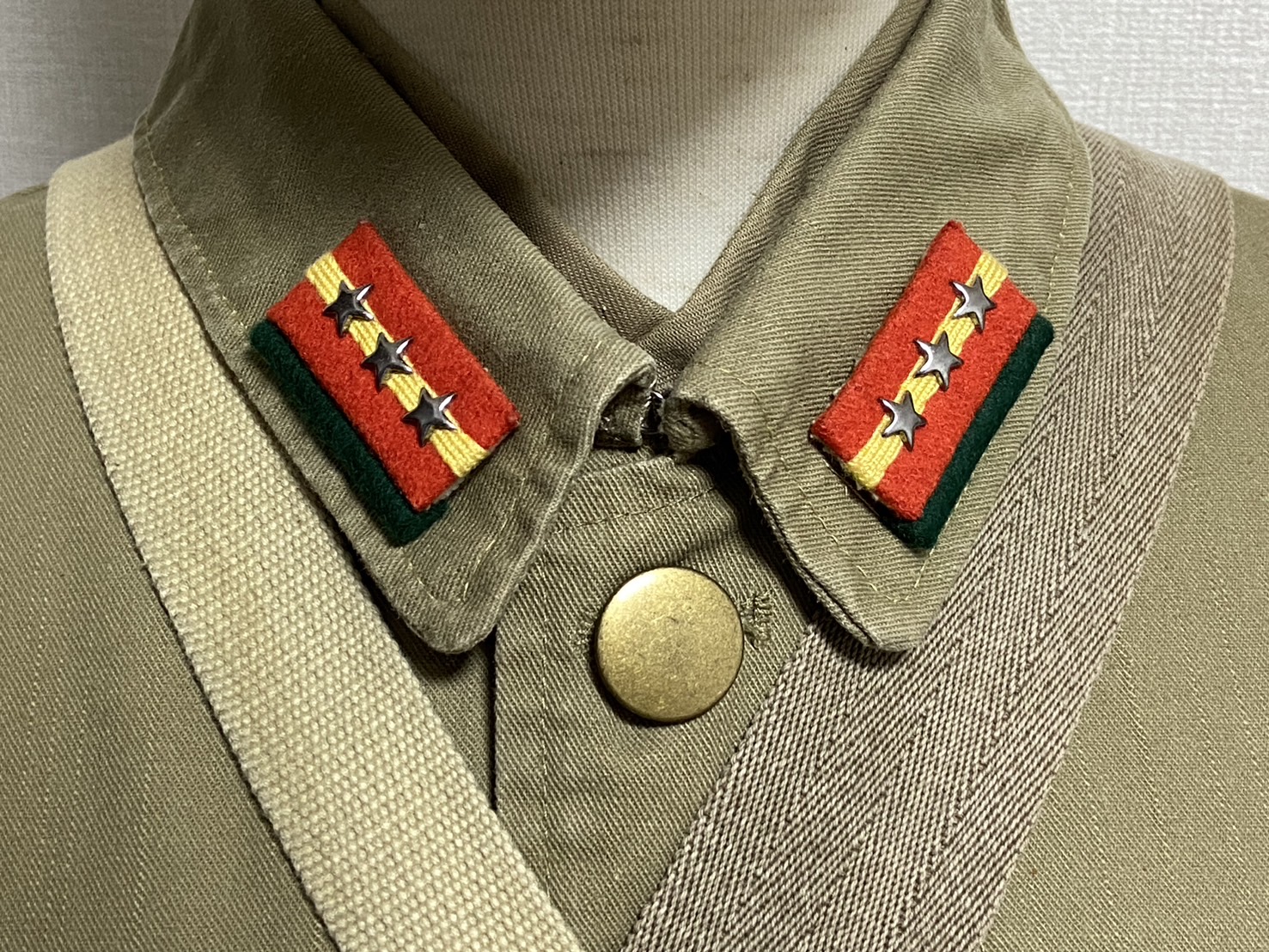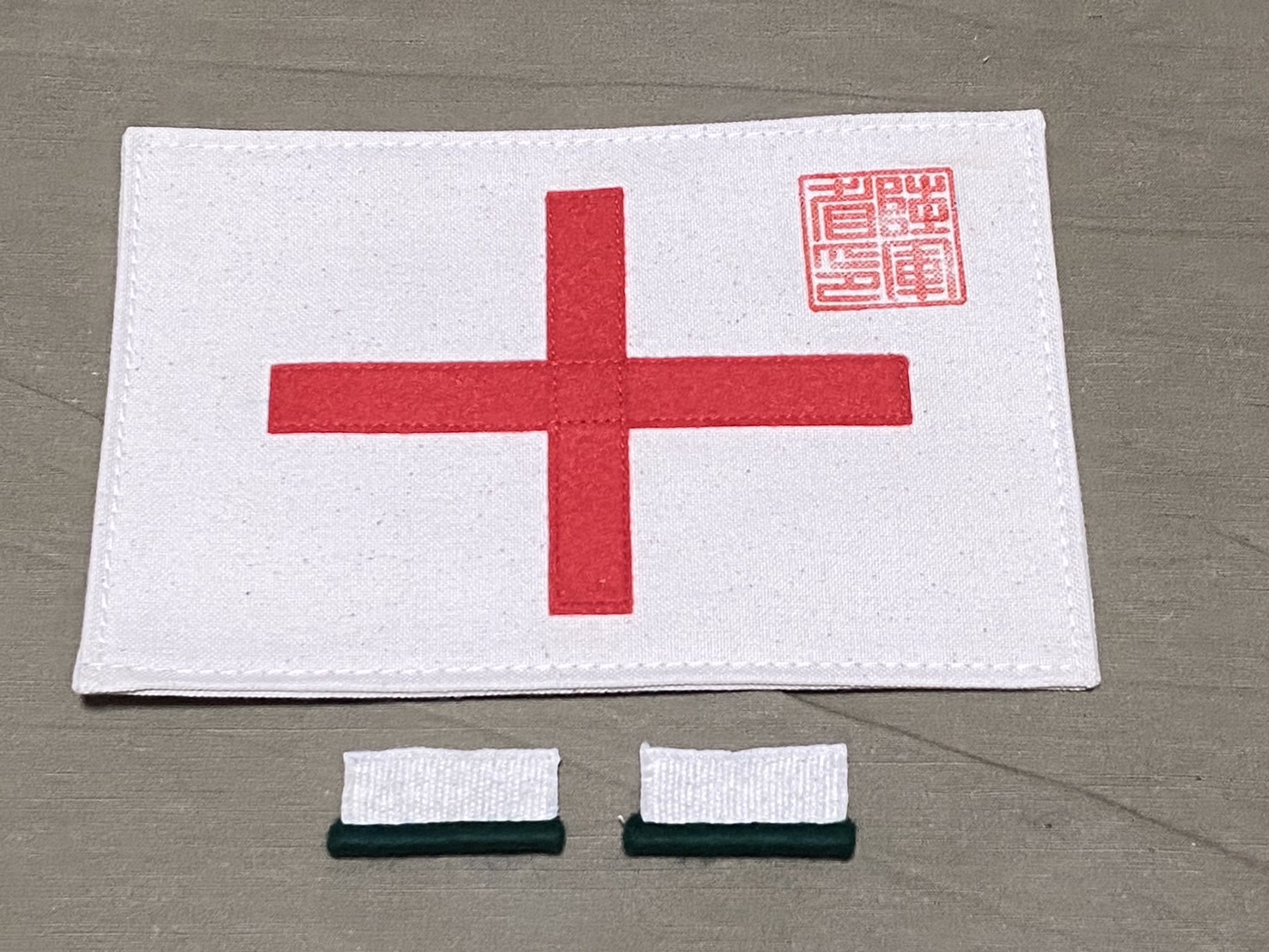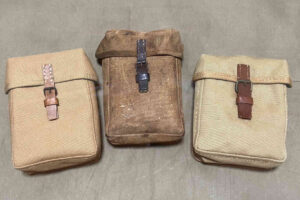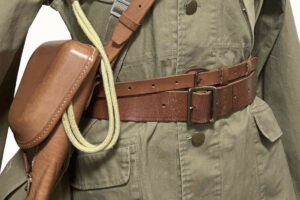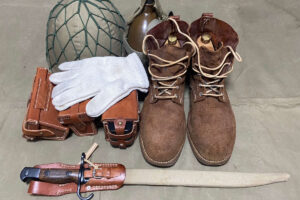I have obtained an authentic Red Cross Patch that medics and military nurses wore on their left arm. The easiest replica of the Red Cross Patch to obtain is the one from HIKISHOP. In this article, I would like to summarize the evolution of the Red Cross Patch and provide a comparison between an authentic Red Cross Patch and the HIKISHOP replica.
The Evolution of the Red Cross Armband
Meiji 41 (1908) Established Red Cross Patch
According to historical documents from the Japan Center for Asian Historical Records, the details of the Red Cross Patch were officially standardized in 1908 under Army Directive No. 621. The document is titled “The Revision of the Red Cross Patch,” indicating that the Red Cross Patch existed even before this revision. Given that the standardization of Bandage Kit and Medical Kit also took place in 1907, it seems likely that medical-related items were being organized and standardized during this period, possibly as a result of lessons learned from the Japanese-Russo War.
The Red Cross Patch established in 1908 had different materials for officers and non-commissioned officers/soldiers. In accordance with Article 21 of the Geneva Convention, the unit responsible for managing the armband would stamp their mark in the upper right corner. The stamp could be from the Ministry of the Army (陸軍省), the General Staff Office (参謀本部), the Army Department of the Taiwan Governor-General’s Office (台湾総督府陸軍部), the Army Department of the Kwantung Governor-General’s Office (関東都督府陸軍部), the Korean Army Garrison Command (韓国駐箚軍司令部), or the respective divisional headquarters. The designated location for attaching the armband was on the upper left sleeve, on the outer side, placed below any other insignia, and the armband was to be sewn around its perimeter. The referenced documents include actual illustrations, so you may want to refer to them for more details.
- For Officers and Equivalent Ranks:
- White Background: White velvet with a white cotton backing.
- Red Cross: Scarlet velvet.
- For Non-Commissioned Officers and Soldiers:
- White Background: White double-layer fabric (referred to as “白生雲斉,” though the exact type of fabric is unclear).
- Red Cross: Scarlet velvet.
- Sizes:
- Length: 6 sun (18 cm)
- Width: 4 sun (12 cm)
- Red Cross Long Diameter: 4 sun (12 cm)
- Red Cross Short Diameter: 3 sun (9 cm)
- Red Cross Width: 5 bu (1.5 cm)
Showa 14 (1939) Established Red Cross Patch
In 1939 (Showa 14), the Red Cross Patch was revised2. The reasons for the revision were as follows:
- Based on Article 21 of the Geneva Convention, stamping with the marks of mobilized units or administrative units is not favorable for counterintelligence purposes. Therefore, all stamps will be changed to the Ministry of the Army’s mark.
- The revision aimed to conserve velvet materials, which were essential wartime supplies.
However, it was also stated that the Red Cross Patch established in 1908 (Meiji 41) could still be used for some time following the revision.
The revision eliminated the differences in materials between officers and non-commissioned officers/soldiers, standardizing them as follows. The size was simply converted from “sun” to centimeters without any change in dimensions. The method of attachment remained the same, and illustrations of this can be found in the referenced documents for further details.
- Materials:
- White Background: White double-layered fabric
- Red Cross: Scarlet fabric
- Sizes:
- Length: 18 cm
- Width: 12 cm
- Red Cross Long Diameter: 12 cm
- Red Cross Short Diameter: 9 cm
- Red Cross Width: 1.5 cm
Comparison with the Replica
Authentic Red Cross Patch
Let’s start with the photos of the authentic item. As evidenced by the historical documents, this is the Red Cross Patch established in 1939 (Showa 14).
The white background is made of slightly yellowed white canvas. The fabric is somewhat stiff, almost as if it has been starched, giving it a crisp texture. It appears to be a brand-new, unused dead stock item.
The Red Cross part is a vibrant fabric closer to vermilion than red, similar to the color used in rank insignias. On the back, there is what seems to be a maker’s mark, but it’s faded and unreadable.
Comparison with the Replica
Here’s a comparison with the HIKISHOP replica. The authentic item is on top, and the replica is on the bottom.
The width of the white background is the same, but the replica is slightly shorter in height. However, since there might have been size variations even among the authentic items, it’s possible that the one HIKISHOP used as a reference had this size. The color of the fabric is very similar.
Even today, white canvas bags can yellow with use. This discoloration is due not only to dirt but also to UV exposure. It is likely that the items worn by medics at the time also had some yellowing.
The biggest difference is the color of the Red Cross. The replica has a dark red color that is closer to crimson. Additionally, the replica shows fraying at the edges of the red fabric, indicating that it is made from woven fabric rather than materials like felt or wool.
Ministry of the Army Stamp
Finally, regarding the “Ministry of the Army” stamp in the upper right corner: When sewing the armband onto the left arm, make sure that the stamped area is positioned in the upper right, as placing it incorrectly will result in the armband being upside down.
The stamp is in a hard-to-read font, with “陸” (Riku/Army) in the upper right, “軍” (Gun/Military) in the lower right, “省” (Shō/Ministry) in the upper left, and “印” (In/Stamp) in the lower left. The actual item uses a distinctly Japanese vermilion ink for the stamp. The HIKISHOP replica originally had a pinkish-red stamp, which was faded and difficult to read, with some characters being incorrect. I have corrected these errors using a permanent marker, particularly fixing the mistake in “省” in the upper left.
By the way, the “Revision of the Red Cross Patch” from Meiji 41 includes detailed descriptions of the components of stamp ink used for printing on fabrics like wool and cotton.
- Permanent Stamp Ink for Wool Fabric:
- Saturated Potassium Permanganate Solution (Potassium permanganate: 1 part, Water: 15 parts): 10 cc
- 5x Caustic Soda Solution: 6 drops
- Prepare fresh ink before each use.
- Permanent Stamp Ink for Cotton Fabric:
- 20% Silver Nitrate Solution
- Store in a brown bottle, but prepare fresh ink whenever possible before use.
- After stamping with this ink, fully expose it to direct sunlight for sufficient time to develop the mark.
Creation of a Precise Reproduction
I was dissatisfied with the details of the HIKISHOP replica, so I decided to make my own. I focused on the color of the cross and the Army Ministry stamp, and I think I was able to achieve a satisfying level. I even created the original data for the Army Ministry stamp myself and had it custom-ordered.
At the same time, I created the sanitary department identification badge established in Showa 18. As shown in the following image, I attach it below the rank insignia.
I’m thinking of listing a few sets of the Red Cross armband and the sanitary department identification badge on Yahoo Auction.
If you are outside Japan and interested in my items, please feel free to contact me through the inquiry form on this blog, Facebook messages, or X (formerly Twitter) direct messages.
Payment can be made via PayPal, and I can ship directly using EMS without the need for any auction proxy services.
Summary
That concludes the overview of the evolution of the Red Cross Patch and the evaluation of the HIKISHOP replica.
While I have pointed out some details, I think the replica is well-made for its purpose. However, I couldn’t shake off my concerns about the colors of the cross and the stamp, so I ended up making my own. I’m not sure how much demand there is, but I made a few extra items and am considering offering them on Yahoo Auction.
Footnote
- “The Revision of the Red Cross Patch” JACAR (Japan Center for Asian Historical Records) Ref.C06084562900, Meiji 41 [1908] “Ni Dai Nikki September” (National Institute for Defense Studies, Ministry of Defense). ↩︎
- “Standardization and Attachment Method of the Red Cross Patch for Use in Wartime Army” JACAR (Japan Center for Asian Historical Records) Ref.C01001766000, Eishon Documents, Volume 5, Book 2, Showa 14 (1939) (National Institute for Defense Studies, Ministry of Defense). ↩︎
